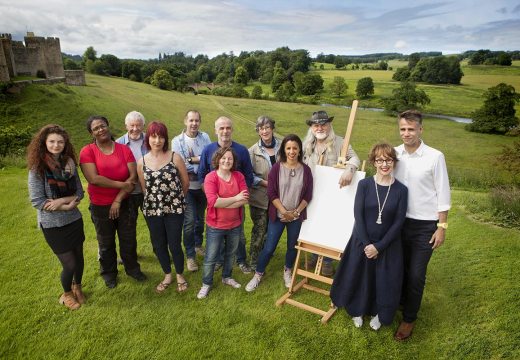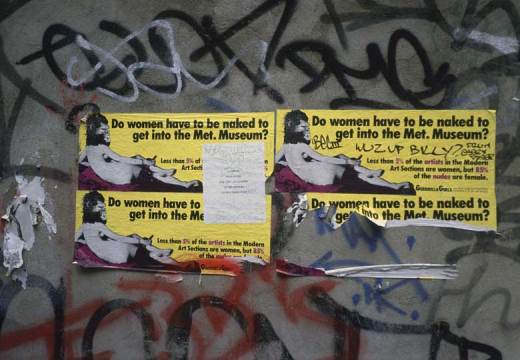Tom Jeffreys reports on art in the Baltic region
The snow has finally melted and the grit is swept from the streets: Helsinki is emerging from its winter slumber.
In January, Amos Anderson unveiled plans for a big new art museum in the city centre. Named after its founder – a newspaper magnate and arts patron – Amos Anderson is the largest private museum in Finland. It’s currently housed in a charming 1913 building commissioned by Anderson as private living quarters and office space (there’s even a chapel on the top floor). It was converted into a museum in 1965.
Its current show is a focused presentation of Vilhem Hammershøi (until 18 May). The emphasis is on the Danish painter’s beguiling mastery of interiors, which are still, subtle, tense, and sparsely populated (a woman stands alone, or reads, or disappears out of view through an open door). The gallery walls have been painted a pale jade, and with its small rooms and parquet flooring, this is the perfect setting for Hammershøi’s understated domestic studies. It’s the best exhibition in Helsinki right now.
In stark contrast are the recently released renders for the new museum. Housed under Helsinki’s much-loved 1930s Lasipalatsi building, JKMM architects claim that their vast, curvaceous vision ‘will be seamlessly integrated to the surroundings while still boldly standing out’. It will contain around 2,000 square metres of exhibition space, cost €50 million (courtesy of Finnish-Swedish arts foundation Konstsamfundet – also founded by Anderson) and is scheduled for completion in 2017, the 100th anniversary of Finnish independence.
The aim is to provide flexibility. As spokesperson Timo Riitamaa told me: ‘The current building is spread over six floors with nine different levels. It cannot give us the possibilities of a new exhibition space that is both larger and all on one floor. We often find that the building limits us and the kinds of exhibitions and artists we can present.’ But at what cost? Big new galleries need lots of paying visitors; that pressure can be much more of a constraint to the imaginative curator than an oddly shaped gallery or two.
By way of example, one need only walk across the street to where Kiasma has just reopened to the public after a six-month renovation. Their headline show is a Robert Mapplethorpe retrospective (until 13 September). It’s bound to bring in the crowds, but it’s hardly breaking new ground: according to the Mapplethorpe Foundation, between 2012 and the end of this year there will have been no less than 42 Mapplethorpe exhibitions worldwide.
Kiasma opened in 1998, taking its name from the building’s ‘Chiasma’ design by US architect Steven Holl (a controversial choice in a country loyal to its own architectural talent). The exterior is a curve of concrete and glass – quite a contrast to the monumental granite neoclassicism of Parliament House opposite. Inside, however, is where Kiasma shines, with its wealth of shapely sightlines. ‘The most important building material in Kiasma is light,’ proclaims the museum website.
As well as a redesign of the ground-floor café-shop-lobby area and technical improvements to climate control and energy efficiency, the renovation has also boosted Kiasma’s capacity for the display of new media. Taking advantage are two deftly curated exhibitions of work from the museum’s own collection: ‘Face to Face’ (until 7 February 2016), which examines the postmodern relationship between portraiture and identity, and ‘The Elements’ (until 9 August 2015).
‘The Elements’ professes to explore ‘our relationship with the world and the forces of nature’. It includes work by a host of Finnish artists as well as international names like the ever-fascinating Mariele Neudecker, and places surprising emphasis on Arte Povera. The exhibition’s central punch comes in the form of Mario Merz’s 1989 work, Untitled (Igloo), a huge dome of glass held together with G-clamps and surrounded by rocks. Inside is another, smaller, dome, adorned with neon Fibonacci numbers. I’m told the whole thing took two months to install: it looks fantastic under the high, curving roof of the gallery’s fifth floor.
But Kiasma is not neglecting traditional media: recent purchases include two paintings by Finnish artist Päivi Takala. Entitled ‘Paper on Painting’, her latest solo show at Galerie Anhava consisted of a number of paintings of art-in-progress. Some depicted scraps of paper with pencil drawings on them; others the peeling masking tape used to construct shapes or block out areas of a painting. Grids featured strongly throughout. Smoke on Paper (2013) summarises a whole wave of contemporary abstraction. Paper on Painting (2015) shows pieces of paper laid over a yellow and black stippled background, which is, the title reveals, the painting of a painting.
Such tricksiness has an illustrious history – see Zoffany’s painting of paintings in the Tribuna of the Uffizi, for example, or Zurbarán’s painting of paint in Saint Luke as a painter before Christ on the Cross. But what Takala is doing, it seems to me, is explicitly examining the status of painting itself, asking at what points paint becomes painting becomes Painting. A key work is one of the most recent: Fencepainting (2015), which depicts a half-painted wooden lattice – the wood visible through layers of red basecoat and black topcoat. This is a painting not of a painting as an art object but of painting as work (labour, chore, everyday task). What is the difference, it asks, between art and ‘mere’ labour when painting is this simple, and this conceptually complex? The fence goes round a garden; the art ends up in Kiasma.
Related Articles
Letter from Helsinki: Finland’s changing art scene (Tom Jeffreys)
Buying for Boijmans: the story behind a recent museum acquisition (Maggie Gray and Sjarel Ex)

















![Masterpiece [Re]discovery 2022. Photo: Ben Fisher Photography, courtesy of Masterpiece London](http://zephr.apollo-magazine.com/wp-content/uploads/2022/07/MPL2022_4263.jpg)
‘Like landscape, his objects seem to breathe’: Gordon Baldwin (1932–2025)